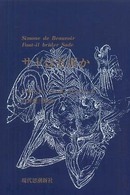Full Description
At centre stage in this volume is the Royal Clock Salt, an exceptional national treasure from the courtly culture of the Renaissance. Most probably made in Paris around 1530 by Pierre Mangot, the royal goldsmith to Francis I, the Clock Salt is somewhere between a jewel and a table ornament. Now part of the collection of the Goldsmiths' Company in London, it is one of only a handful of treasures surviving from the renowned Jewel House of Henry VIII. It is unknown whether it was a diplomatic gift from Francis I or whether Henry VIII bought the Clock Salt himself; regardless, the object raises interesting questions about the role of diplomatic gifts at the Tudor court which is a subject addressed by a number of the authors. Many questions still remain about the Clock Salt's history following its sale in the aftermath of the English Civil War, but this publication presents the fullest account to date of what is known about the object. Importantly, the authors also place it within a wider European Renaissance context by comparing it with other similar objects known to have been made or designed by Mangot and his contemporaries such as Hans Holbein. A secondary strand in the volume places the Clock Salt in the context of nineteenth- and twentieth-century taste in England and, in particular, reflects recent trends in scholarship by considering the influence of European collectors such as the Rothschilds on the British taste for historic silver. The volume therefore sheds new light on an exquisite object that has beguiled and fascinated owners and viewers for centuries. It also marks the completion of a collaborative research project between the British Museum, the Goldsmiths' Company and The Rothschild Foundation.
Contents
Introduction by Timothy Schroder and Dora Thornton
Chapter 1: Diplomatic gifts between Francis I of France and Henry VIII of England (Timothy Schroder)
Chapter 2: Treasures associated with King Francis I in the Kunsthistorisches Museum in Vienna, including the Cellini Salt Cellar and the Gemma Augustea (Paulus Rainer)
Chapter 3: Pierre Mangot and goldsmiths at the court of King Francis I of France (Michèle Bimbenet-Privat)
Chapter 4: The status and significance of the Sibyls Casket by Pierre Mangot in the Waddesdon Bequest in the British Museum (Dora Thornton)
Chapter 5: Hans Holbein the Younger and his designs for goldsmiths' work in relation to the Clock Salt (Olenka Horbatsch)
Chapter 6: The Clock Salt and its history after the reign of Charles I (Rosemary Ransome Wallis)
Chapter 7: Rothschild family collecting and their taste for continental Renaissance silver in the nineteenth century (Julia Siemon)
Scientific study of the Clock Salt and its making: a new look at the clock mechanism (Andrew Meek, Oliver Cooke, Fleur Shearman, Denise Ling, Caroline Cartwright, Dan O'Flynn and Joanne Dyer)
Conclusion by Timothy Schroder and Dora Thornton
Bibliography
Index








